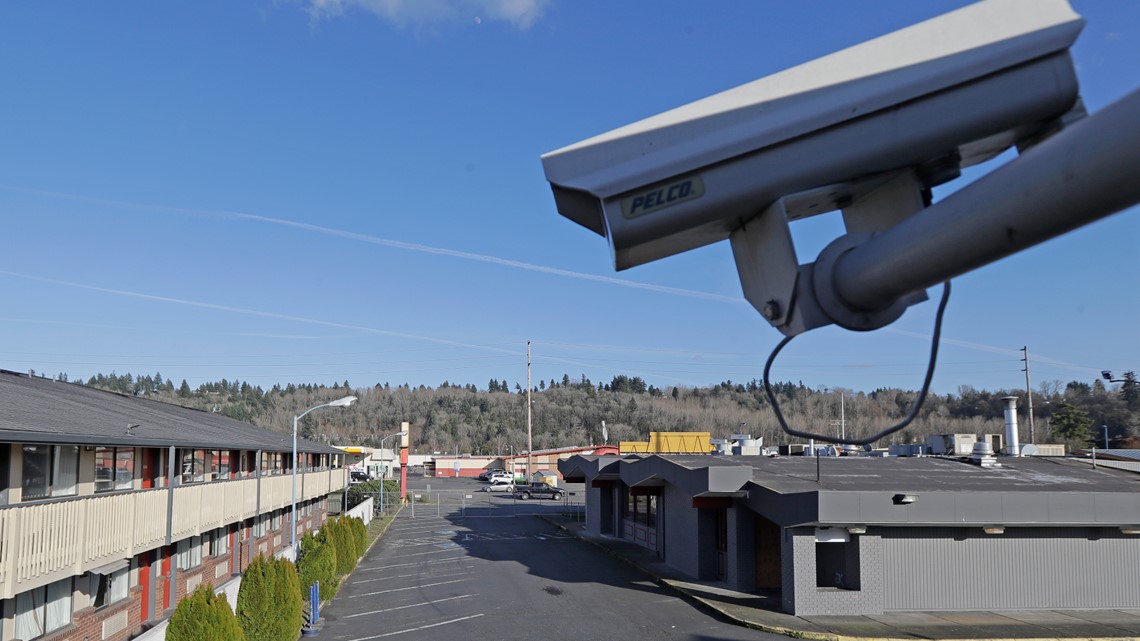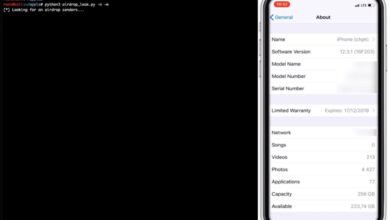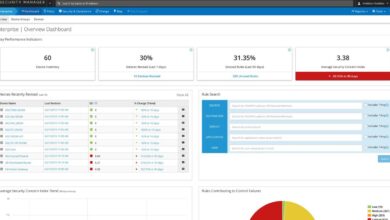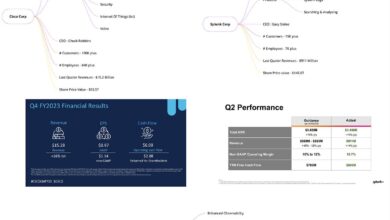
Hackers Breach Verkadas Cloud Camera Systems
Hackers breach systems of cloud based security camera company Verkada – a chilling headline that highlights the vulnerability of even seemingly secure systems. This massive breach exposed sensitive data from countless organizations, raising serious questions about cloud security practices and the responsibility of companies handling such sensitive information. We’ll dive deep into the methods used by the hackers, the devastating consequences for Verkada and its clients, and the critical lessons learned about bolstering cloud security in the wake of this incident.
It’s a story that should make every business, big or small, rethink its security posture.
The sheer scale of the Verkada breach is breathtaking. Think about it: security cameras, designed to protect, were themselves compromised, exposing potentially sensitive video footage and internal data. This wasn’t just a minor data leak; it was a systemic failure that underscores the importance of robust security measures across all aspects of a company’s infrastructure. We’ll explore the technical details of the hack, the vulnerabilities exploited, and the steps that could have prevented this catastrophic event.
Verkada’s Security Posture Before the Breach
The Verkada breach highlighted significant weaknesses in the company’s cloud security infrastructure, despite their position as a provider of security solutions. Understanding their pre-breach security posture requires examining their architecture, the vulnerabilities exploited, and the role (or lack thereof) of crucial security controls. This analysis focuses on the publicly available information following the incident.Verkada’s system relied heavily on a centralized cloud infrastructure managing thousands of security cameras worldwide.
Their architecture involved a complex network of servers, databases, and client applications interacting through various APIs. While specific details of their infrastructure remain undisclosed, the breach revealed a reliance on a single point of failure and a lack of sufficient segmentation between different parts of their system. This centralized nature, while offering operational advantages, presented a significant attack surface.
System Vulnerabilities Exploited by Hackers
The hackers exploited vulnerabilities in Verkada’s system, primarily focusing on weak access controls and insufficient security monitoring. The most significant weakness was the use of a default, easily guessable administrative password. This single point of failure allowed the hackers to gain privileged access to the entire system, bypassing multiple layers of security that should have been in place.
Further investigation revealed a lack of robust logging and alerting mechanisms, making it difficult to detect and respond to unauthorized access in a timely manner. The lack of effective intrusion detection and prevention systems allowed the attackers to move laterally within the network, escalating their privileges and accessing sensitive data without triggering any alarms. This points to inadequate security testing and a lack of proactive security measures.
Multi-Factor Authentication and Access Control
Prior to the breach, Verkada’s implementation of multi-factor authentication (MFA) and access control measures was clearly insufficient. While some level of access control was likely in place, the attackers demonstrated the ability to bypass these measures with relative ease, suggesting either poorly configured controls or a lack of consistent enforcement. The use of a single, easily guessed password highlights the critical failure in MFA implementation, demonstrating a reliance on passwords as the sole form of authentication.
The absence of robust MFA, such as time-based one-time passwords (TOTP) or hardware security keys, significantly weakened their security posture. Furthermore, the lack of granular access control meant that even if MFA was correctly implemented, a compromised account could grant the attacker access to far more data than was strictly necessary. The absence of robust role-based access control (RBAC) exacerbated the damage caused by the breach.
For instance, if RBAC had been implemented effectively, even if an administrator account was compromised, the attacker’s access would have been limited to specific functions and data sets.
The Hackers’ Methods and Techniques: Hackers Breach Systems Of Cloud Based Security Camera Company Verkada

The Verkada breach highlighted a concerning reality: even sophisticated cloud-based security systems are vulnerable to determined attackers. The hackers involved demonstrated a mastery of several techniques, exploiting weaknesses in Verkada’s infrastructure to gain complete control of their network and access sensitive data. Their methods weren’t particularly novel, but their execution was effective, underscoring the importance of robust security practices across all levels of a system.The attack leveraged a combination of readily available tools and exploitation of known vulnerabilities.
This wasn’t a zero-day exploit; instead, it was a classic case of neglecting fundamental security hygiene. The hackers didn’t need sophisticated, custom-built malware; they relied on simple yet powerful techniques.
Methods Used in the Verkada Breach
The following table summarizes the key methods employed by the hackers, the tools used, their impact, and potential mitigation strategies.
| Method | Tool Used | Impact | Mitigation Strategy |
|---|---|---|---|
| Credential Stuffing/Brute-Force Attack | Custom scripts, potentially leveraging readily available tools like Hydra or Hashcat | Compromised administrator accounts granting access to the internal network and systems. | Implement strong password policies (length, complexity, and regular changes), multi-factor authentication (MFA), and account lockout mechanisms. Regularly audit user accounts and permissions. |
| Exploitation of Weak Internal Network Security | N/A (Exploitation of existing vulnerabilities) | Once inside the network, lateral movement allowed access to other systems and data. | Segment the network using VLANs, implement robust network access controls (NAC), and regularly scan for vulnerabilities using penetration testing. |
| Privilege Escalation | System tools and scripts (depending on the operating system) | Elevated access privileges allowed the hackers to perform actions beyond their initial access level. | Implement the principle of least privilege, regularly audit user permissions, and use strong access control lists (ACLs). |
| Data Exfiltration | SCP, FTP, or other data transfer protocols. | Unauthorized download and transfer of sensitive data from Verkada’s systems. | Implement data loss prevention (DLP) solutions, monitor network traffic for suspicious activity, and encrypt data both in transit and at rest. |
Exploited Vulnerabilities
The Verkada breach exposed several critical vulnerabilities. The most significant was the use of a hardcoded password for administrative access to the internal network. This single point of failure granted the attackers initial access, bypassing any other security measures. Additionally, the lack of MFA and insufficient network segmentation allowed for easy lateral movement within Verkada’s infrastructure. The attackers also exploited the lack of robust security monitoring, allowing them to remain undetected for an extended period.
Comparison with Common Attack Vectors
The techniques used in the Verkada breach align closely with common attack vectors against cloud-based systems. Credential stuffing, weak passwords, and insufficient network security are all prevalent vulnerabilities. The lack of robust security monitoring and logging is also a common factor in many breaches. Many cloud-based attacks follow a similar pattern: gaining initial access through a weak point (often a compromised credential), then moving laterally to access more sensitive data.
The difference in the Verkada case was the scale of the compromise, largely due to the lack of robust security controls and monitoring across the entire system. This demonstrates that even with a sophisticated cloud infrastructure, fundamental security practices remain paramount.
Impact of the Breach on Verkada and its Customers
The Verkada breach had far-reaching consequences, impacting not only the company’s reputation and finances but also the privacy and security of its numerous customers. The sheer scale of the data compromised and the subsequent fallout serve as a stark reminder of the vulnerabilities inherent in cloud-based security systems and the importance of robust security protocols. The incident highlighted the potential for significant damage when security measures fall short.The compromised data encompassed a wide range of sensitive information.
The Verkada security camera breach highlights the critical need for robust cybersecurity in even the most seemingly secure systems. Thinking about how to build more secure applications quickly, I was reading about domino app dev the low code and pro code future and its potential to accelerate development while maintaining security. Ultimately, though, even the fastest development can’t fix fundamental flaws in design – as the Verkada hack painfully demonstrates.
This wasn’t just limited to video footage; it included access credentials, customer data, and internal Verkada documents.
Data Compromised During the Breach
The hackers gained access to a vast trove of data, including video footage from numerous locations worldwide. This footage, often from sensitive areas like hospitals, schools, and prisons, represented a significant privacy violation. Beyond the video, the breach exposed customer account information, potentially including usernames, passwords, and other personally identifiable information (PII). Internal Verkada documents detailing system architecture, security protocols (or lack thereof), and employee information were also accessed.
The breadth of the compromised data underscores the seriousness of the breach and its potential impact on both Verkada and its customers.
Consequences Faced by Verkada
The consequences for Verkada were immediate and severe. Reputational damage was significant, with widespread media coverage painting a picture of a company with inadequate security measures. This damage extended to customer trust, leading to cancellations and a decline in new business. The financial impact included costs associated with incident response, legal fees, and potential regulatory fines. Verkada also faced intense scrutiny from regulatory bodies and law enforcement, potentially leading to legal ramifications and hefty penalties.
The long-term effects on the company’s viability and market share are still unfolding. For example, similar to the Equifax breach, Verkada likely faced increased insurance premiums and ongoing costs related to enhanced security measures and legal compliance.
Chain of Events Following the Breach
The following flowchart illustrates the sequence of events after the Verkada breach was discovered:
Flowchart: Verkada Breach Response
[Imagine a flowchart here. The flowchart would begin with “Breach Discovered,” branching to “Internal Investigation” and “Law Enforcement Notification.” The “Internal Investigation” branch would lead to “Data Loss Assessment,” followed by “Remediation Efforts” (including patching vulnerabilities and improving security protocols). “Law Enforcement Notification” would lead to “Cooperation with Authorities” and “Potential Legal Actions.” All branches would ultimately converge at “Customer Notification” and “Public Statement.” This illustrates the complex and multi-faceted response required following a significant data breach.]
Verkada’s Response and Remediation Efforts

Verkada’s response to the massive security breach was swift, though arguably not swift enough given the sensitive nature of the data compromised. The company acknowledged the breach publicly and Artikeld the steps taken to mitigate the immediate damage and prevent future incidents. Their response involved a multi-pronged approach encompassing immediate system lockdown, investigation, and long-term security improvements.The initial response focused on containing the breach.
This involved immediately disabling the compromised accounts and implementing emergency measures to restrict access to the affected systems. Verkada also launched a comprehensive internal investigation to determine the extent of the breach and identify the root causes. This investigation involved collaboration with external cybersecurity experts and law enforcement. Simultaneously, they began notifying affected customers, a process that, while necessary, was criticized for its slow pace in the initial stages.
The company also worked to secure its systems against further attacks, patching vulnerabilities and strengthening network defenses.
System Lockdown and Access Control Enhancements, Hackers breach systems of cloud based security camera company verkada
Following the breach, Verkada implemented several crucial changes to their access control mechanisms. They moved away from a system relying heavily on privileged user accounts with broad access to a more granular, role-based access control (RBAC) system. This meant assigning specific permissions to individual users, limiting their access to only the data and functionalities necessary for their roles.
Multi-factor authentication (MFA) was also mandated for all employees, a significant step towards strengthening authentication protocols. Further, Verkada invested in enhanced intrusion detection and prevention systems, implementing more robust monitoring and alerting capabilities to detect and respond to suspicious activity in real-time. These improvements were aimed at preventing future unauthorized access and data breaches.
Improved Security Protocols and Vulnerability Management
The breach highlighted significant vulnerabilities in Verkada’s security posture. In response, the company overhauled its security protocols, focusing on several key areas. They implemented a more rigorous vulnerability management program, regularly scanning their systems for vulnerabilities and promptly patching identified weaknesses. This included a commitment to following a strict patch management schedule, ensuring that software updates and security patches were applied promptly across all systems.
They also strengthened their network security infrastructure, implementing firewalls, intrusion detection systems, and other security measures to protect against external attacks. Internal security awareness training for employees was significantly improved, educating them on best practices for data security and the importance of recognizing and reporting suspicious activities.
Best Practices for Cloud Security Based on Verkada Breach Lessons
The Verkada breach serves as a stark reminder of the critical importance of robust cloud security. Several best practices can be gleaned from this incident:
- Implement strong access control measures, including role-based access control (RBAC) and multi-factor authentication (MFA).
- Regularly scan systems for vulnerabilities and promptly patch identified weaknesses. Follow a strict patch management schedule.
- Invest in robust intrusion detection and prevention systems to monitor for and respond to suspicious activity.
- Employ a comprehensive security information and event management (SIEM) system to collect and analyze security logs from various sources.
- Conduct regular security audits and penetration testing to identify weaknesses in your security posture.
- Develop and maintain a comprehensive incident response plan to effectively manage and mitigate security incidents.
- Prioritize employee security awareness training to educate staff on best practices for data security and the importance of recognizing and reporting suspicious activities.
- Establish clear data governance policies and procedures to ensure the responsible handling and protection of sensitive data.
- Regularly review and update security policies and procedures to adapt to evolving threats and vulnerabilities.
- Engage with external security experts for regular assessments and guidance.
Long-Term Implications and Industry Best Practices
The Verkada breach served as a stark reminder of the vulnerabilities inherent in cloud-based security systems and the critical need for robust cybersecurity practices across the board. The incident’s far-reaching consequences extended beyond the immediate victims, impacting the entire cybersecurity landscape and prompting a reevaluation of security protocols for cloud-based services. This necessitates a deeper understanding of the long-term implications and the adoption of industry best practices to prevent similar breaches in the future.The Verkada breach highlighted critical deficiencies in several key areas.
The ease with which the hackers gained access underscored the importance of strong authentication mechanisms, regular security audits, and proactive vulnerability management. The widespread exposure of sensitive data emphasized the need for comprehensive data loss prevention strategies and robust encryption protocols. Furthermore, the incident underscored the crucial role of regulatory compliance and the potential legal ramifications of data breaches, pushing organizations to prioritize data protection as a fundamental aspect of their business operations.
Improved Data Security Practices and Regulatory Compliance
The Verkada breach acted as a catalyst for stricter data security practices and heightened awareness of regulatory compliance. The incident exposed the shortcomings of relying solely on technological solutions without incorporating robust security policies and procedures. Organizations now face increased pressure to implement comprehensive data security frameworks that align with industry best practices and comply with relevant regulations such as GDPR, CCPA, and HIPAA.
This includes not only technical measures like encryption and access controls but also administrative controls like employee training, incident response plans, and regular security audits. The financial penalties and reputational damage associated with data breaches are now significant enough to incentivize proactive and comprehensive security measures. For example, following the breach, many organizations reviewed their own security postures, particularly regarding access control and multi-factor authentication, leading to widespread adoption of stronger security practices.
Cybersecurity Incident Response Plan Lifecycle
A visual representation of a typical cybersecurity incident response plan lifecycle would show a circular process. The first phase, Preparation, involves proactive measures such as risk assessments, vulnerability scanning, security awareness training, and the development of incident response plans and playbooks. This is followed by the Identification phase, where potential security incidents are detected through monitoring systems or user reports.
Containment is the next stage, where efforts are focused on isolating the affected systems and preventing further damage. Eradication involves removing the threat and restoring affected systems to a secure state. Recovery focuses on restoring normal operations and data integrity. Finally, Post-Incident Activity includes a thorough analysis of the incident to identify root causes, weaknesses in security controls, and areas for improvement.
This phase also includes updating the incident response plan based on lessons learned and conducting security awareness training to prevent similar incidents in the future. This cyclical nature emphasizes the importance of continuous improvement and proactive security measures. The plan’s effectiveness depends on well-defined roles, responsibilities, and communication channels. Regular testing and simulations are critical to ensuring the plan’s effectiveness in a real-world scenario.
For example, a company might conduct a simulated phishing attack to test employee awareness and the effectiveness of their incident response team.
Closing Notes
The Verkada breach serves as a stark reminder that even sophisticated companies are vulnerable to cyberattacks. The incident highlighted the critical need for robust security protocols, proactive threat detection, and a comprehensive incident response plan. While Verkada has since taken steps to improve its security, the long-term implications of this breach will likely resonate throughout the industry, pushing for greater transparency, accountability, and a renewed focus on securing our increasingly interconnected world.
Let’s hope this incident serves as a wake-up call for all businesses to prioritize cybersecurity and invest in the necessary resources to protect themselves from similar attacks. The future of our data depends on it.
Questions Often Asked
What type of data was compromised in the Verkada breach?
The breach exposed a wide range of data, including video footage from various locations, customer information, employee credentials, and internal company documents.
How did the hackers gain access to Verkada’s systems?
Reports indicate the hackers exploited weak or default passwords, gaining administrative access. Further investigation is needed to fully understand the complete attack vector.
What legal ramifications did Verkada face after the breach?
Verkada faced significant regulatory scrutiny and potential legal action from various sources, including government agencies and affected clients. The exact consequences are still unfolding.
What are the long-term consequences for the cybersecurity industry as a result of this breach?
The breach is expected to lead to increased scrutiny of cloud security practices, enhanced regulatory compliance efforts, and a renewed focus on robust security measures for IoT devices.





